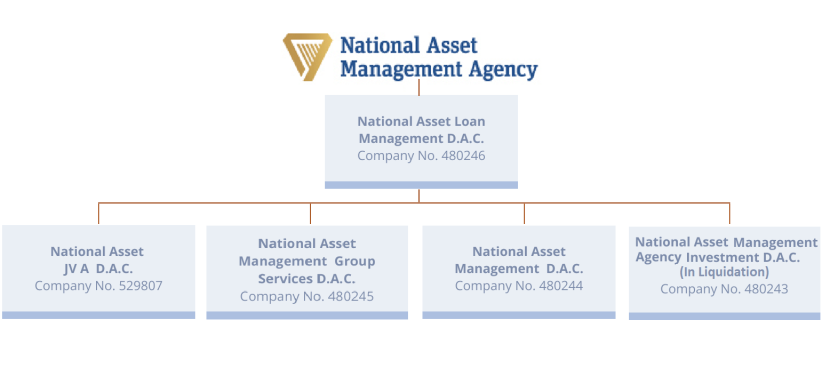Group Structure

The graphic demonstrates the structure of NAMA Group. This includes National Asset Management Agency at the top and the following subsidiaries below:
- National Asset Loan Management D.A.C.
- National Asset Management Agency Investment D.A.C. (in Liquidation)
- National Asset Management D.A.C.
- National Asset Management Group Services D.A.C.
- National Asset JV D.A.C.
